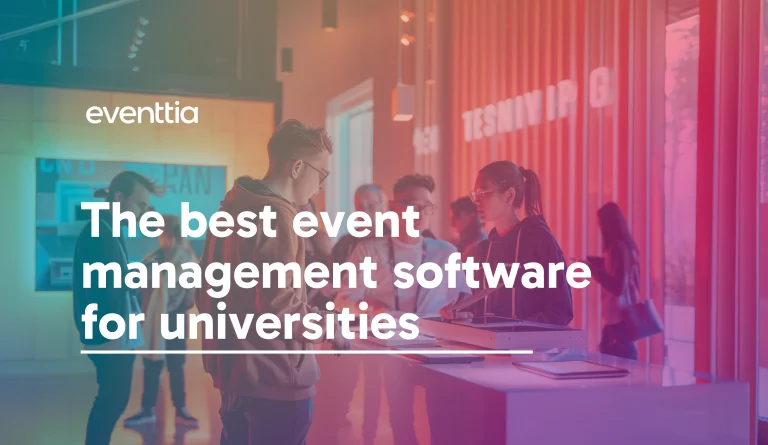Virtual events are going to be playing an increasingly important role in our marketing strategies. Yet, for the majority of companies, this will be their first time running them, and with that comes a degree of stepping into the unknown.
Combine this with the need to find new marketing initiatives that can fill the gap left by live events, and what we’re seeing is that many companies are jumping into virtual events without any sort of strategy in place. This is all very well for getting your first event ticked off the list, but why are you organizing these events, and what are you hoping to achieve?
This is where your virtual event strategy comes into play, and this is exactly what will give you the answers to those questions above. Having a strong strategy is paramount to succeeding well into the future. That’s why instead of running virtual events because they sound like a good idea, running them with the purpose of getting tangible results is always going to bring you a lot more success.
Think of it like this: A virtual events strategy is the framework that makes decisions and sets up actions, ensuring that everything you do is well-aligned with your initial intentions. In other words, it’s your master plan that you’ll be following when planning your event.
This is what’s going to help you stay focused, avoid wasting time on the things that don’t matter, and ensure that you design actions that exclusively serve your goals. So to help you with this, we’ve drawn up 5 crucial components that need to be a part of your virtual event strategy:
Align your virtual events strategy with your business goals
You’ve made the decision to host a virtual event – but why? To answer this, it’s important to take a step back. Events are some of the many tools that marketers have at their disposal and they’re used for a number of different reasons. Generating more revenue, engaging with customers, and increasing brand awareness are all marketing objectives, but are they aligned to your business goals?
For marketers, it’s very easy to get distracted with the smaller details without having business goals in mind. When this happens marketing objectives and business goals start to run off on a tangent. And if you don’t address this now, you’re only going to create more problems further down the line, when your marketing objectives aren’t contributing to your business’ goals.
To stop this from happening. First, identify what it is that you want to achieve and how to quantify your results, then make sure that your objective is aligned with your marketing objectives. Once you’ve figured all that out, you can start creating an action that will help define the direction you choose.
Identify your ideal target group and identify their biggest challenges
As obvious as it sounds, your virtual event needs to be built around your attendees. Not only does it increase the chance of appealing to them but it will also help create personal connections. Your goal is to appeal to a specific attendee type and for this to happen, you need to create a persona.
This is a representation of your ideal event guest based on market research and real data that you’ve collected. Not too far off a buyer persona, this will include their backgrounds, demographics, pain points, and any other characteristics. It will also include some event-related information such as content, topic interests, and any major pain points.
The more you know about your attendees, the more value you can create by designing an event designed exactly to their requirements. You’ll be able to answer the biggest challenges that they’re facing and with this, you’ll be creating relevant virtual events that are going to spark interest with your attendees. That’s why it’s essential that you collect as much information as possible. And a good starting point for this is to conduct surveys and interviews prior to your first event.
Decide the structure, the format, and the branding of your virtual events
Leading on from the last point, it’s important to connect the dots between objectives and the details of the event. With so many types of virtual events which have their own structure and format this can be a real challenge. What’s important is that you weigh up the pros and cons and always have the bigger picture in mind i.e. Does this have my objectives in mind? Is this the right event for attendees? How is the branding going to work?
To cover this, the first thing you’ll want to do is decide on the structure and format of your events. The good news is that you have plenty of options to choose from. The not so good news is that you’ve got to pick the right one. A general rule of thumb to follow here is that you want the structure and format to be fully aligned with why you’re having the event.
For example, training events are going to need lots of educational content with how-to tutorials and webinars. Whereas a networking event is going to be focused on video conferencing and forums. Whatever the event, it’s vital that you distribute your content through the right channels to ensure the best experience for your attendees.
Deciding on the structure and format also coincides strongly with the narrative that your events will want to deliver. This needs to capture the essence of your organisation and it needs to be reflected in every single element of your virtual event, from how you communicate with your attendees through to the colours that you’ll be using. Try and have a clear understanding of what you want your virtual events to look like, what differentiates them from the rest, and what your attendees should expect from them.
The last element is branding which in other words means, how is my event going to project a persistent message to my attendees? First thing first, you’ll need to nail the basics such as the colour scheme, tagline and other key messaging. Then you’ll want to think about the different branding elements within the context of a virtual event meaning slides, boards, backgrounds, and even items that you can post to your attendees.
Agree upon the frequency and the promotion of your virtual events
Is your event going to be a one-off or are you planning to run a series of events? The answer to this question will determine how much time and effort goes into planning and where attention should be diverted to. It’s also important to bear in mind your own capabilities and how big your marketing department is.
Virtual events take time and as with any event, you’re going to want to give yourself enough of it to ensure that your event is going to be a success. This means finding the right speakers and preparing all of your content. Often this takes longer than expected, so it’s good to get your first virtual event under your belt to give you an idea of the time and preparation required.
What’s important is that you don’t overwhelm yourself by putting too much on your plate. Finally, it’s worth noting that virtual events attract larger audiences on a global scale, which means that there’s less of a need to run multiple events.
Next up is the promotion and this requires a strategy within itself. Virtual events equate to more reach and bigger audiences, but without the right promotion that’s never going to happen. First, start off with a clear message of what your event is about, its added value to attendees, and how your brand comes into this.
Then think about the speakers and all of your content. You want all of this to be aligned so that when you promote the event you’re going to attract attendees whilst giving a clear message of what the event is all about. It’s important to identify what channels you’re going to promote the event on and how you’re going to do it, be it through social media campaigns or guest posts. Then consider the potential costs.
Identify the KPIs you’ll be tracking and the ROI you’re expecting from your virtual events strategy
When planning your virtual event, it’s vital to factor in KPIs along with what your ROI should be. This is important because every event should have tangible results, especially for executives who will measure the success of your event on these metrics.
To get a good grasp of this, ask yourself questions such as: Do I want to focus on building brand awareness or driving sales revenue? Or, if I’m choosing to drive sales revenue, do I want to generate leads or generate pipeline value? This quickly helps to form the basis of your KPIs and will give you a good idea of how much you’re going to be spending on your event.
After any event, it is essential that you keep hold of all relevant data as this will allow you to assess your metrics with a new, more informed perspective. By calculating your ROI along with the actual amount spent for each metric, you will be able to see what performed best. This is a great way of identifying what was actually spent and the return that you’re getting on it.
Make it happen
Virtual events are here to stay for the foreseeable future. If you’re looking to get the benefits of event marketing then this is the way to do it. As you can see, designing a strong and solid virtual events strategy is the prerequisite for success. Spending the time in planning out your strategy will give you the results that you’re looking for.
Discover how Eventtia helps world-leading brands digitize and scale their events
Learn moreShare



